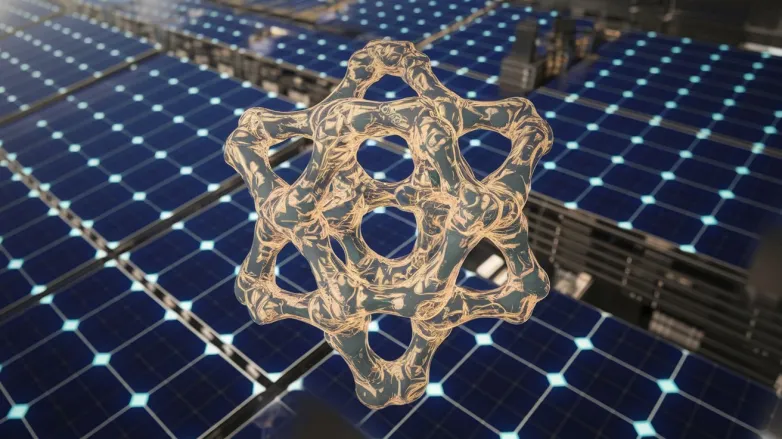New Perovskite Structure Boosts Light Harvesting Efficiency
- Discover how a groundbreaking perovskite structure harnesses visible light to boost charge transport and enhance efficiency in layered devices, paving the way for greener energy solutions!

Researchers from EPFL, University of Bern, and HZB have developed a new lead-halide-based Ruddlesden-Popper perovskite structure that utilizes a visible-light-absorbing naphthalene-iminoimide cation (NDI-DAE). This innovative material aims to enhance light harvesting and improve the spatial separation of charge carrier transport, advancing the efficiency of layered perovskite-based devices.
The study revealed that thin films of (NDI-DAE)2PbI4 demonstrate significant photoluminescence quenching and effective charge-transfer dynamics, indicating a type II nanoheterostructure. Time-resolved microwave conductivity assessments suggest efficient free charge generation with mobilities reaching 4 × 10–4 cm2 V–1 s–1, while mixed halide variants show diverse band gaps and enhanced photogenerated charge carrier separation, particularly with high bromide content.
How does the new perovskite structure improve charge carrier transport and efficiency?
- New Material Composition: The incorporation of the naphthalene-iminoimide cation (NDI-DAE) introduces unique electronic properties that effectively improve the interactions with light. This enhances the material's capability to absorb visible light, which is crucial for generating free charge carriers.
- Improved Charge Carrier Mobility: The study indicates that the photogenerated charge carriers exhibit increased mobility (up to 4 × 10–4 cm² V–1 s–1) within the perovskite structure. Higher mobility facilitates faster charge transport, reducing the likelihood of recombination and boosting overall device efficiency.
- Type II Nanoheterostructure Formation: The formation of a type II nanoheterostructure allows for an effective separation of electrons and holes within the material. This spatial separation minimizes recombination rates, making more charge carriers available for current generation.
- Phase Stability: The Ruddlesden-Popper structure shows improved stability under operational conditions, allowing for long-term performance in solar cells and photodetectors. Greater stability aids in maintaining the efficiency advantages over time.
- Tunable Band Gaps: The ability to vary the halide composition within the perovskite lattice creates a range of band gaps. This tunability is essential for optimizing the absorption spectrum of the material to capture a broader range of solar energy, enhancing its overall efficiency.
- Effective Photoluminescence Quenching: Observations of photoluminescence quenching in (NDI-DAE)₂PbI₄ suggest that exciton dynamics have been optimized. This means that once light is absorbed, the generated excitons are efficiently dissociated into free charge carriers, contributing positively to the performance of the device.
- Enhanced Charge Carrier Separation: Variations in halide content, particularly increasing bromide levels, have shown to facilitate better separation of charge carriers. This is vital for suppressing recombination losses, which can drastically impair the performance of solar cells.
- Optimized Device Architecture: The layered nature of the Ruddlesden-Popper structure allows for the design of devices with improved charge collection efficiencies. By leveraging the unique properties of this new structure, researchers can potentially create more efficient multi-layered solar cells.
- Potential Applications: The advancements in perovskite structures hold promise for a variety of applications beyond photovoltaic devices, including photodetectors, light-emitting diodes, and other optoelectronic devices, broadening the impact of this technology in the renewable energy sector.
- Scalability and Cost-Effectiveness: The synthesis techniques developed for this new material could lead to more cost-effective and scalable production methods, which is critical for widespread commercial deployment of perovskite-based technologies.
- Synergistic Effects: The combination of naphthalene-iminoimide structures with lead-halide perovskites may yield synergistic effects, whereby the interactive properties enhance light absorption and charge transport, further pushing the boundaries of efficiency in photovoltaic applications.
Also read

